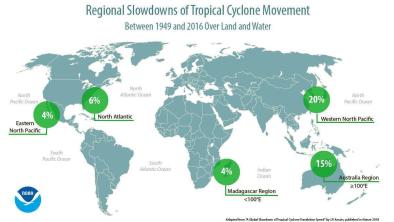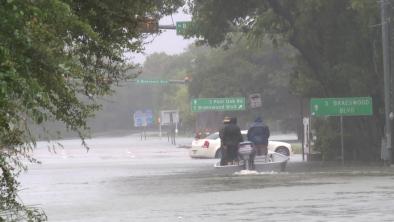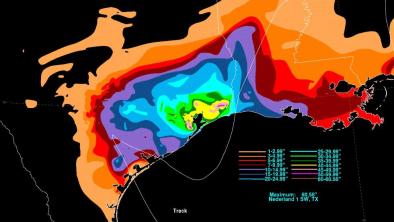Science Source
Attribution of extreme rainfall from Hurricane Harvey, August 2017
- States that during August 25–30, 2017, Hurricane Harvey stalled over Texas and caused extreme precipitation, particularly over Houston and the surrounding area on August 26–28, causing extensive flooding with over 80 fatalities and large economic costs
- Conducts an observational analysis, primarily using two rain gauge-based datasets
- Analyzes extreme rainfall in the Houston area in three ensembles of 25 km resolution models
- Finds that the three-day rainfall sums that were responsible for most of the flooding were extremely rare, with a return time for station observations of more than 9000 years in the current climate
- Finds that observations since 1880 over the region show a clear positive trend in the intensity of extreme precipitation of between 12% and 22%, roughly two times the increase of the moisture holding capacity of the atmosphere expected for 1 °C warming according to the Clausius–Clapeyron (CC) relation
- Extrapolates these results to the 2017 event, concluding that global warming made the precipitation about 15% (8%–19%) more intense, or equivalently made such an event three (1.5–5) times more likely
Related Content
Headline

Jun 6, 2018 | LA Times
Hurricanes and typhoons are slowing down, which means more time to do damage
Headline

Jun 6, 2018 | KPRC
Report gives new insight into just how bad Hurricane Harvey was
Science Source
| Nature
A global slowdown of tropical-cyclone translation speed
James P. Kossin
Headline

May 24, 2018 | The Weather Channel
New NOAA Maps Show the Torrents Harvey Unleashed on Texas


